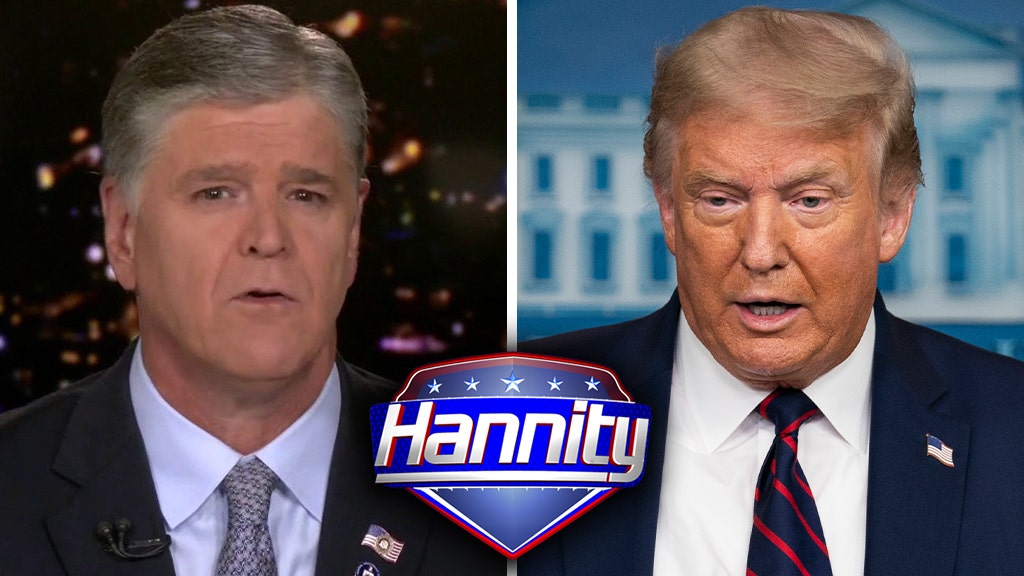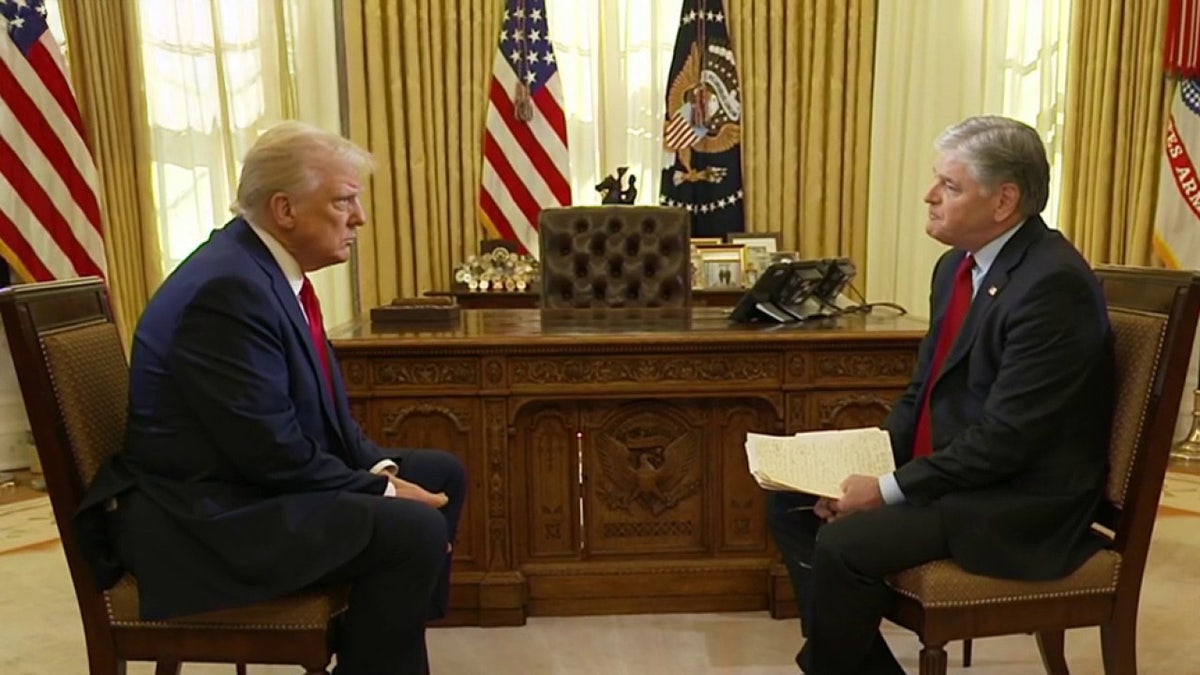Sean Hannity's Editing & Trump Ties: Key Details You Missed!
Has the pursuit of ratings and political agendas eclipsed the pursuit of truth in the realm of cable news? Recent revelations surrounding Fox News host Sean Hannity's editorial practices paint a troubling picture of media manipulation, raising serious questions about journalistic integrity and the erosion of public trust.
The spotlight has once again turned on Hannity, a prominent figure at Fox News, following allegations of selectively editing content to shape narratives and influence public perception. The focus of these accusations centers on Hannity's handling of a response given by White House Press Secretary Karoline Leavitt. Reports indicate that Hannity allegedly manipulated the footage to create the impression that Leavitt had decisively "dominated" a reporter during an exchange. However, the reality, as revealed by unedited versions of the exchange, tells a different story. Leavitt's response, particularly in the context of questions regarding President Donald Trump's tariffs, was deemed by some observers to be, at best, misleading, and at worst, factually incorrect. The manipulation, if confirmed, serves as a stark example of how media outlets can distort information to support a particular political stance or to portray individuals in a specific light.
The controversy surrounding Hannitys editing practices is not an isolated incident. A recent book has disclosed that Hannity reportedly pleaded with Donald Trump to cease his public criticism of Fox News. The timing of this alleged phone call is particularly noteworthy, occurring just weeks before Fox News settled a significant defamation lawsuit with Dominion Voting Systems in 2023. This suggests a potential underlying tension between the former president and the network, despite their often-aligned political viewpoints. The lawsuit, which stemmed from Fox News' coverage of the 2020 presidential election, further underscored the network's vulnerabilities and the repercussions of spreading unsubstantiated claims.
| Attribute | Details |
|---|---|
| Full Name | Sean Patrick Hannity |
| Born | December 30, 1961 (age 62), New York City, New York, U.S. |
| Education | Adelphi University (dropped out), New York University (attended, did not graduate) |
| Occupation | Television and radio host, political commentator, author |
| Known For | Host of "The Sean Hannity Show" and "Hannity" on Fox News |
| Political Affiliation | Conservative |
| Marital Status | Divorced from Jill Rhodes (2020) |
| Children | 2 |
| Notable Works | Host of "Hannity" on Fox News, "The Sean Hannity Show" (radio) |
| Books | Let Freedom Ring, Deliver Us from Evil, Conservative Victory, The Great American Fight |
| Controversies | Promoting election fraud claims, spreading misinformation, close ties with Donald Trump |
| Website | Fox News Profile |
Furthermore, the practice of editing footage to create a desired narrative extends beyond specific instances involving Leavitt. Fox News itself, as media watchdogs have noted, has a history of manipulating footage of former President Trumps interviews and public appearances. This pattern of selectively presenting information raises questions about the network's commitment to journalistic ethics and transparency. When a media organization consistently presents a curated version of events, it risks losing the trust of its audience and contributing to a climate of misinformation. For example, the networks defense of its editorial choices included arguing that the editorial practices of other news outlets, like CBS, indicated a bias and warranted scrutiny. This statement reflects the increasingly polarized media landscape, where outlets are often seen as either allies or adversaries, with the public frequently exposed to versions of reality crafted to bolster certain political stances.
The implications of such actions are far-reaching. When media outlets prioritize political agendas over factual accuracy, the publics ability to make informed decisions is significantly compromised. This erosion of trust in the media can fuel further polarization, making it harder for individuals to engage in constructive dialogue and reach common ground on important issues. In the context of political discourse, carefully selected soundbites and edited interviews can be used to create exaggerated impressions or completely misrepresent a person's views. For example, during a recent interview with Donald Trump on Fox News, Hannity questioned Trump about reports of potential retribution against Democrats if he were to be re-elected. Trump's reply, "number one, theyre wrong," was a direct response to those claims. If this answer was presented in an edited format that excluded the complete context or softened the rebuttal, it would lead to misinterpretation of Trump's actual position.
The saga of media manipulation also reaches into the heart of legal disputes. The governments response in certain legal proceedings has reportedly included photographic evidence of classified materials. This demonstrates the sensitivity of the political situation and the high stakes of these accusations. It further emphasizes the necessity for transparent, accurate reporting, especially when handling sensitive information. The focus on leaked information and classified materials only increases the necessity of responsible journalism, since it involves matters of national security.
The broader context of these events highlights the challenges of navigating the current media landscape. Social media platforms, like Facebook, are often criticized for amplifying partisan viewpoints and "drowning us in an ocean of right wing lies," to cite the words of certain sources. This echoes growing concerns about the influence of misinformation and how it is distributed. In a world where the news cycle is instant and algorithms are designed to keep users engaged, it's important for audiences to critically assess the sources of their information and to seek out a variety of perspectives.
This includes examining the format and style of delivery. Even the style of writing can reveal certain biases or viewpoints, as exemplified in the way the topics are presented on a show such as "Hannity." In an episode from August 31, 2022, the program and its host often frame the news in a way that aligns with specific political viewpoints. Viewers should be critical about how the news is presented. This includes paying attention to the language used, the sources cited, and the tone of the reporting. Viewers should consider the angle of the presentation and whether there are other facets that are presented in the media.
Consider the content and format of the Hannity show on Fox News. The format often features exclusive interviews with prominent figures, such as Donald Trump and Elon Musk, and often includes a "blowtorch" to the wasteful policies of the US government. Such exclusive interviews are crafted to be newsworthy. The focus on these interviews is a means of controlling the narrative. This also means that the focus is on political ideology or celebrity news. The program then often features political analysis or commentary. This raises the questions about the nature of the news.
The show "Hannity" frequently addresses various events. For example, the show has been known to provide coverage to major news events. The show covered the death of a child, a fashion week story, and a sports game penalty decision, among other topics. From an audience perspective, the presentation of these events may appear objective. However, when viewing the show, it is important to ask whether these topics are considered with a degree of objectivity or if these topics are presented in a way that supports a particular viewpoint or agenda. The coverage could be presented in a way that reinforces pre-existing notions or biases.
In such media instances, it is essential to examine all sources. It is recommended to consult a range of media outlets, from established newspapers to alternative news providers, to get a better understanding of an event or topic. Comparing and contrasting different accounts of the same event can help you get a more complete picture. For instance, if one outlet focuses on one facet of a story, an independent outlet may provide counter-narratives. It is essential to distinguish between facts, opinions, and sensationalism in the media. In the case of Sean Hannity's broadcasts, audiences must distinguish between the facts of the events being discussed. What constitutes the presenter's point of view? Are claims supported with evidence, and can you find corroborating evidence to back up the presenter's account? By assessing the media content in the light of these considerations, the audience can become more media-literate consumers and be less likely to be swayed by media manipulation. These considerations are of utmost importance to navigate an increasingly complex media landscape.

'Hannity' on Trump legal team filing response to DOJ ahead of special

Hannity to interview Trump on coronavirus response, crime in American

Trump sits down with 'Hannity' for first exclusive White House